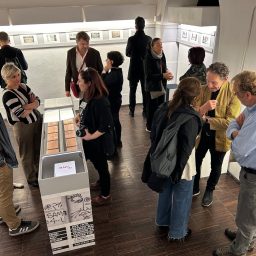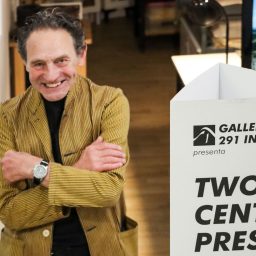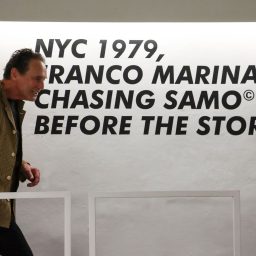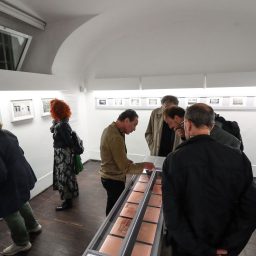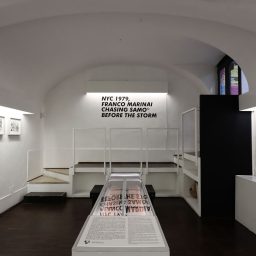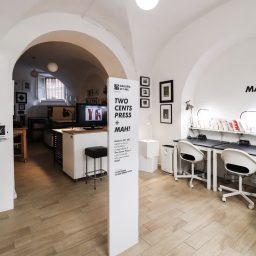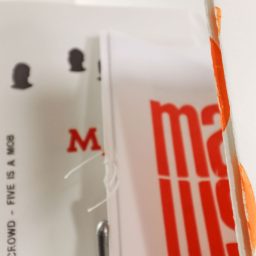The street photography of Franco Marinai (Castello-Florence, 19...) takes shape in the New York of the late Seventies: a cultural hotbed that, as a prelude to the Eighties, saw the spotlight turn on the city's eclectic nightlife, amidst the decay of dilapidated buildings and the art scene of the East Village. Here art thrived as a vital dimension of its alternative culture and a new generation in which the worldly stardom of Andy Warhol and his Factory was reflected. It was an extraordinary era, animated by a euphoric frenzy and an unprecedented freedom of expression: a place and a time in which the street, a space of dichotomous multicultural juxtapositions, catalysed the disarming simultaneity and the rampant stratifications of meaning of a phenomenon of custom, soon intercepted by the art system.
An echo retraced by Marinai in the footsteps of SAMO©️, the writer of Downtown and Harlem, before his consecration as an artist. Imposed on the contemporary scene alongside Keith Haring, the legend of Jean-Michel Basquiat (1960-1988) is here nurtured in urban glimpses of 1979, where their lives have been ideally intertwined since the previous year, when in 1978 Marinai, a young political science student landed in the chaotic American metropolis catapulted from his native Florence, just as the urban expression of SAMO©️, the pseudonym of a very young Basquiat, then a student at the City-as-School, was imposing itself on the attention of New Yorkers and anyone crossing the city.
Abandoned buildings, shutters and even the sign of the National Bank of North America initialled by his graffiti, testifying to his authentic expressive urgency, in syncopated subversive protests against the ‘Same Old Shit’: a naïve approach that would soon be borrowed in the pictorial hybridism of his neo-expressionist research in the 1980s. Gestures and signs reiterated in the background of Franco Marinai's production, who, having descended among the streets of New York with his lens, immortalised every detail. An important testimony that brings back a crucial year for American Graffitism, before -in 1980- it was elected as a ‘gallery’ art form. Transposed from the New York scene to the Roman one, in its retroactive look this series of black and white shots eludes the purely formal aspect of Graffitism, capturing its rare documentary essence.
Hence, from Franco Marinai's film negatives comes the exhibition project NYC 1979: FRANCO MARINAI CHASING SAMO©️ BEFORE THE STORM, which at Gallery 291 EST offers the visual story of an unrepeatable era. An eternalised imagery ‘before the storm’ - as the title states - that is, in the moment immediately preceding its own epilogue: before gentrification; before the social scourge of AIDS; before the multiform and unruly genius, institutionalised by the market, reaches the mainstream; before Basquiat himself, a few years later, disappears forever, ascending to the Olympus of art. A dimension outlined, or rather, only touched upon, attesting to the hyperbolic moral fibre of a system that ‘did not collect works, but bought individuals’, as the poet and critic Rene Ricard declared in 1981.
Archived and now rediscovered, these negatives find new regenerative lifeblood in several intaglio prints and in the twelve copper plates that highlight the use of the photogravure process in the exhibition. To accompany NYC 1979: FRANCO MARINAI CHASING SAMO©️ BEFORE THE STORM, the spaces of Gallery 291 INC will host a focus of an editorial nature on the independent reality of Two Cents Press and MAH! magazine, as Franco Marinai's collateral projects. And it is precisely the #30 edition of MAH!, which has, in fact, already seen the publication of these shots, covered by the curatorship of Ulrich Blanché in Illegal. Street art graffiti.

